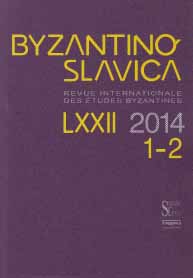Eusebius’ of Caesarea image in 14th century Byzantium and its sources
Eusebius’ of Caesarea image in 14th century Byzantium and its sources
Author(s): Lev LukhovitskiySubject(s): History
Published by: AV ČR - Akademie věd České republiky - Slovanský ústav and Euroslavica
Summary/Abstract: The paper deals with historical memory of Eusebius of Caesarea in Middle and Late Byzantium. The 14th century testimonies are self-contradictory: Eusebius is depicted as either an orthodox supporter of Constantine the Great (Gregoras’ Life of Constantine), or as a leader of 9th century iconoclasts (Gregoras, Kokkinos, Dexios). A possible explanation for such distortion may be sought in polemical strategies of the 8th and 9th century. The transformation from a proto-iconoclast and Arianist into an actual participant of the iconoclastic controversy was determined by the later polemicists’ choice of sources, since their main source were the writings of Nicephorus of Constantinople, a consistent supporter of the tactics of polemical labeling, and not the writings of John of Damascus and Germanus I who held an approving view of Eusebius.
Journal: Byzantinoslavica - Revue internationale des Etudes Byzantines
- Issue Year: LXXII/2014
- Issue No: 1-2
- Page Range: 234-246
- Page Count: 13
- Language: English
- Content File-PDF

